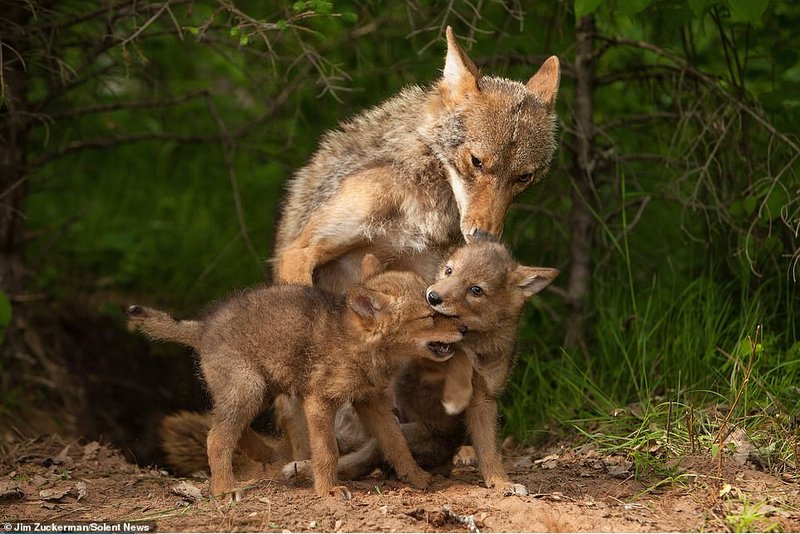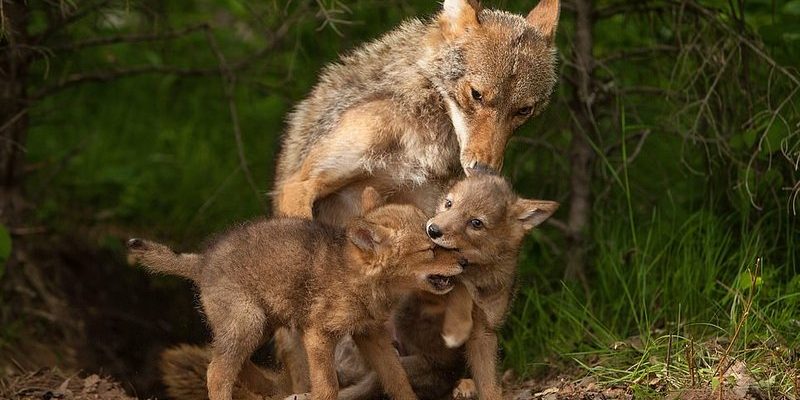
Coyotes are known for their adaptability, and this extends to their parenting style, too. They have a well-organized social structure that helps them thrive in various environments, from urban areas to remote wilderness. Raising young coyotes, known as pups, involves a mix of teamwork, protection, and teaching essential survival skills. Picture a tight-knit family working together—like a sports team, everyone has a role, and cooperation is key.
Now, let’s dive into the specifics of how coyotes raise their young and what that process looks like in the wild.
The Mating and Denning Season
Coyotes typically mate in late winter or early spring. This is when males and females pair up for the breeding season. Once a female has mated, she becomes pregnant and will carry the pups for about 63 days. During this time, a lot happens!
After about two months, it’s time for the pups to make their grand entrance. Coyotes often choose a den site, which can be a burrow, a hollow log, or even a rocky crevice. The den serves as a safe haven for the tiny pups, where they can stay hidden from predators. The location is crucial—close enough to food sources but far from potential dangers.
Here’s the thing: the female coyote does most of the work during this period. She’ll stay close to the den to nurse the pups and protect them while the male hunts and brings food. It’s a prime example of how teamwork is fundamental to raising young coyotes.
Caring for the Pups
Once the pups are born, the care they receive is intense and hands-on. Coyote pups start off tiny and blind—just like human babies! They rely entirely on their mother for nourishment. She feeds them milk for the first few weeks, and during this time, she’s particularly vigilant, keeping watch for any signs of danger.
Around three weeks old, the pups’ eyes begin to open, and they start to explore their surroundings. This is when the fun begins! The mother still takes primary responsibility, but you can imagine the excitement as the pups start to crawl and play. It’s like having a group of little tornadoes in the den!
The male coyote also plays an integral role at this stage. He’ll bring back food like small mammals, birds, and even scraps from larger prey. This not only nourishes the female but also helps teach the pups about the food chain—they start to understand where their meals come from.
Social Learning and Exploration
As the pups grow older, usually around 5-6 weeks, they’re ready to start venturing outside the den. This is where the real learning happens. Coyotes are highly social animals, and the interactions between the pups and their parents are crucial for teaching them survival skills.
You might wonder, how do they learn? It’s a lot like watching children play. The pups will wrestle with each other, practice chasing, and explore their territory. Their parents are always nearby, observing and guiding them. Sometimes, you might see a pup trying to mimic a parent’s actions—like stalking or howling. It’s both adorable and essential for their development.
During this phase, the parents teach their young how to hunt and locate food. They might bring back live prey for the pups to watch or even play with. Through observation and imitation, the young coyotes gradually learn the skills they’ll need as adults.
Pack Dynamics and Support
Coyote families often consist of more than just the immediate parents and pups. You’ll find that older siblings or other relatives can help with parenting duties, too. This kind of support is vital. Imagine a large family, where the older kids pitch in to help with the younger ones. It creates a nurturing environment that benefits everyone.
The pack dynamic also plays an essential role in raising young coyotes. Each member has tasks—some might be responsible for keeping watch while others hunt or bring food. This collaboration increases the odds of survival for the pups. When they grow up in a supportive pack, they learn how to interact and coexist with others, which is a key survival skill in the wild.
It’s worth noting that not all pups will survive to adulthood. Natural predators, disease, and accidents are all part of life in the wild. However, those that do make it often benefit from the education and experience they gain from their parents and pack.
Independence and Leaving the Den
By the time they’re around 8-10 weeks old, coyote pups are becoming more independent. They start to spend more time outside the den, honing their skills in hunting and socializing. It’s a bittersweet time for parents. They’ve put in the hard work, from nurturing to teaching, and now it’s time for the pups to begin their journeys.
When the pups are about six months old, they may start to leave the family unit. Some might stay with their parents for a while longer, while others will venture out to establish their own territories. This process is similar to young adults leaving home to find their paths in life.
Here’s a fun fact: coyotes are known for their strong ties to family. Even after leaving the den, siblings may stick together for a while before branching out. It’s not uncommon for them to reunite later in life, which showcases their social nature.
Challenges in the Wild
Raising young coyotes isn’t always smooth sailing. They face several challenges in the wild. From competition with other predators to human encroachment on their territories, there’s always a sense of danger lurking around. Weather can also be unpredictable, making it tough for parents to provide food and a safe environment.
You might ask, how do coyotes adapt? Their flexibility is key. If food is scarce in one area, they can quickly shift their hunting grounds or even change their diets. This adaptability not only helps the adults survive but also ensures their pups have the best chance possible at thriving in their environment.
Another risk comes from urban areas. As cities expand, coyotes often find themselves living closer to humans. While they can often adapt to these surroundings, it can pose new dangers, from cars to increased competition for food.
The Importance of Coyotes in Ecosystems
Coyotes play an essential role in their ecosystems. By controlling populations of smaller mammals, they help maintain a balance in nature. This means that their success in raising young contributes to the overall health of their environment.
When coyote populations are healthy, the positive effects ripple through the ecosystem. For example, reducing populations of rodents can prevent them from overgrazing on vegetation, which benefits plants and other animals. So, while a family of coyotes might seem like just a part of a wild landscape, their presence is crucial for ecological balance.
In essence, raising young coyotes is a complex interplay of nurturing, social learning, and survival skills. They might face challenges, but their adaptability and the strong family bonds they form help ensure that their species continues to thrive.
Raising young coyotes in the wild is far from simple, but it’s a fascinating journey filled with teamwork, learning, and survival. By understanding how these amazing creatures raise their pups, we can better appreciate their role in nature and the delicate balance of our ecosystems. Whether you’re simply curious or passionate about wildlife, there’s something endlessly captivating about the world of coyotes and their families.

